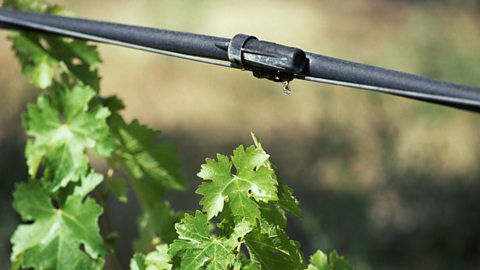Strategies to reduce desertification
Prevention is much more cost-effective than rehabilitation. Desertification can be reduced by adopting the following strategies:
- Planting more trees - the roots of trees hold the soil together and help to reduce soil erosion from wind and rain.
- Improving the quality of the soil - this can be managed by encouraging people to reduce the number of grazing animals they have and grow crops instead. The animal manure can be used to fertilise the crops grown. Growing crops in this way can improve the quality of the soil as it is held together by the roots of plants and protected from erosion. This type of farming is more sustainableAn activity which does not consume or destroy resources or the environment..
- Water management - water can be stored in earth damA dam made of earth. Earth is used to create a circular hollow to store rain water. in the wet season and used to irrigate crops during the dry season. This is an example of using appropriate technologySimple equipment and technology that the local people are able to use easily and without much cost. to manage water supplies in the desert environment.
- Magic stones (or bunds) are circles of stones placed on the ground to hold water on the soil rather than letting it run quickly over the surface.
- Drip irrigation is where water drips slowly onto the ground from pin-sized holes in a hose lying on top of the soil. This minimises water loss, maximises effectiveness and can be delivered via a solar pump.

Drip irrigation, where water drips slowly from a hose